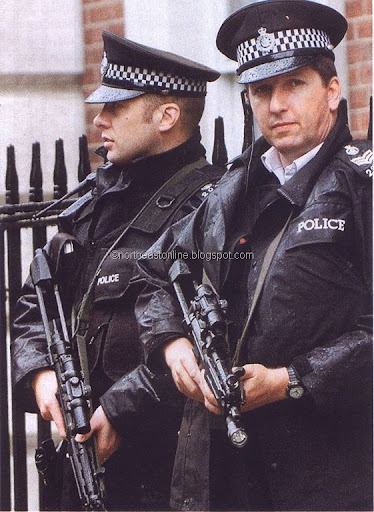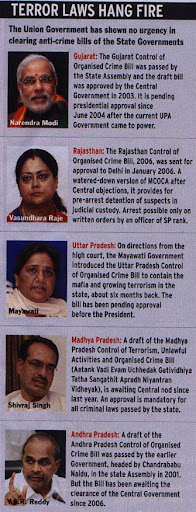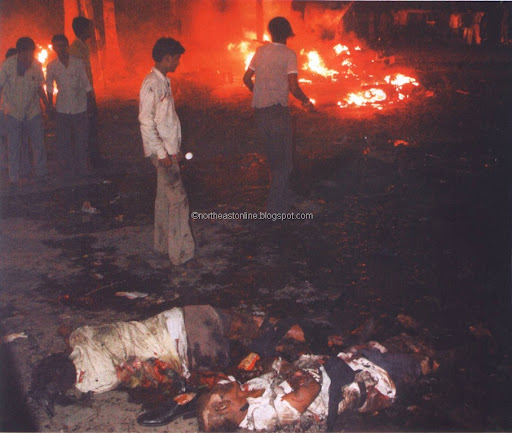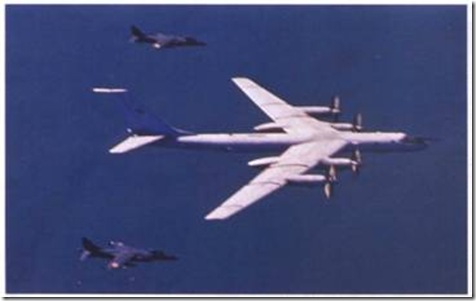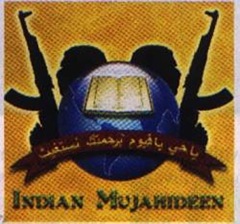

Terror now sports an Indian face with ISI training and Taliban indoctrination. It has made the task of weeding out terrorists from locals all the more tough.
plausible deniability—a political doctrine that originated in the 1950s allowed the US president to deny the covert operations and assassinations carried out by the a. The word is as applicable to the shadowy terror games being played out in the subcontinent as it was to the skulduggery of the Cold War. It can, for instance, help explain the new gameplan of Pakistan’s Inter-Services Intelligence (isi) to spread terror throughout the hinterland yet denying any knowledge of it. Ahmedabad was the newest and deadliest in a series of attacks, over the past few years, having claimed about 53 lives and the reappearance of a new group, the Indian Mujahideen.
“While continuing giving financial aid, training and arms assistance to the Lashkar-e-Toiba (LeT), isi is encouraging it to depend for its operations in Indian territory on Indian Muslims only,” says terrorism expert B. Raman. Welcome desi jihad. While usual suspects like LeT and the Jaish-eMohammed (JeM), which carried out attacks on Parliament and in Ayodhya, have been lying low, the focus in the past few months has now shifted to the Harkat-ul-Jihad-al Islam (HuJI), a shadowy Bangladesh-based jihadi organisation that first shot into prominence with blasts on the Shramjeevi Express and in Varanasi. The explosives used now comprise locally available ammo- alum nitrate and gelatin sticks instead of iiux that is easily traceable to Pakistan. The Gujarat blasts are believed to have been planned by HUJI and executed by the Indian Mujahideen, which, investigators say, is a new name for the banned Students Islamic Movement of India (siMfl. isi is believed to have encouraged HUJI to set up a separate India- specific organisation with recruits solely from the Indian Muslim community.
Secretary of US Department of Homeland Security Michael Chertoff believes the next attack on the US could be carried out by “clean skin” terrorists—European nationals who could fly under the radar. Are the Indian Mujahideen, a purely Indian organisation with no overt Pakistani or Bangladeshi involvement, the “clean skins” the isi has coveted?
For starters, this is a group that believes in assiduously clahning credit for its misdeeds, always through an email and sometimes with proof and signed by a mysterious “Guru al ilindi”. Their voluble 14-page email sent after the Gujarat attack bizarrely requested “LeT and other organisations not to claim the responsibility for these attacks”.
Almost 24 hours after the blasts in Jaipur in May, two rv channels in Delhi had received an anonymous email on behalf of the Indian Mujahideen. Significantly, the message included an auth‘entic picture of one of the cycles alleged to have been used in Jaipur (the number was readable), leading to the possibility that the Uttar Pradesh and Jaipur blasts were carried out by the same group.
What is the composition of these groups? Following the 2002 Gujarat riots, some of the more radical elements in the DeobandTablighi Jainaat and AhIe Eladis tanzeeins in Gujarat vowed vengeance. As many as two dozen students, most of them, of course, Kashmiris whowere studying in Deobandi madrasas in south Gujarat, fled the madrasas for arms and explosives training in Pakistan soon after the riots. Twelve of these were students of the Deobandi madrasa at Kantharia near Bharuch called Darul Uloom Arabiyyah Islamiyyah. (These madrasas have now stopped enrolling Kashmiri students following police pressure). It is possible that the blasts were the work of these new recruits. one of the most notorious com manders of iiwi and Leader of its Auragabad Javed Kashmiri, who is eluding Maharashtra Police, had his religious education in a similar madrasa near Bharuch. The 101- year-old Deobandi madrasa at Dabhel near Surat,
which is the oldest Deobandi madrasa in Gujarat, has also been accused of spreading radicalism.
At least two maulvis charged with terrorist acts have studied in Dalihel. In Gujarat, almost all those arrested in rela
tion to terror acts following the post-Godhra riots. including the infamous Akshardham attack andthe lesser known bus bomb blasts in 2002 in which 13 people were injured, were Deobandis.
So, it came as no surprise last week when the police arrested a radical AhIe Hadis maulvi, Abdul Halim, within hours of the Ahniedabad blasts.
Halim faces an old but unsubstantiated charge that he had sent some boys to Pakistan for arms training following the Gujarat riots.
The emails follow a recurnng theme—that Indian Muslims had decided to take the offensive way to waging a jihad. They refer to the severe penalties awarded to the accused in the Munibal blasts of March 1993, lack of action against Ilindu police officers who allegedly comniitted atrocities on Muslims, the Gujarat riots of 2002, the assault on arrested Jest suspects by some lawyers and, that the criminal justice system treated the Muslims severely but was lenient with the Hindus.
How to identify terrorists without hurting the community—recruitment aspect for terrorists—is a challenge before law enforcement officials. One officer who had mastered this technique after acquiring sound knowledge of the working of the Wahhabi tanzeems was Gujarat Police DIG D.G. Vanzara, who was in- charge of the state AntI-Terrorist Squad (ATs). lie had reportedly made life miserable for the ultra radical Wahhabis in Gujarat during his tenure. This process screeched to a halt when he was arrested in the Sohrabuddin encounter case along with two other n’s officers and 11 other policemen in June 2007.
Though controversial, Vanzara had, on the basis of his knowledge and skill, raised his own intelligence network within the Muslim community by roping in the moderate elements even in the Wahhabi tanzeems. I-Ic used this information to monitor the tanzeems. One of his unorthodox techniques was keeping the relatives of absconding terror act accused under his personal custody till the accused presented himsell’before the police. Unorthodox measures they may have been, but they succeeded in keeping radical Islamic elements on a tight leash. Vanzara’s acts, though, were often interpreted as harassment of the Muslim community, while in effect these were necessary measures to prevent terror attacks, say police officials. Many see last week’s attack as a result of a big intelligence lapse on the part of the state police, since a very large number of locals are believed to be involved.
The absence of Vanzara was clearly visible even in the Ahmedabad blast investigation last week. Despite suspecting the involvement of a large number of locals in the terror act, the police picked up only Ilalim.
As a police official puts: “Following such incidents, the net has to be cast wide. The unwanted fish can be released back into the lake while retaining the wanted ones.” Clearly, for law enforcement agencies, caution is the new watch word.•



